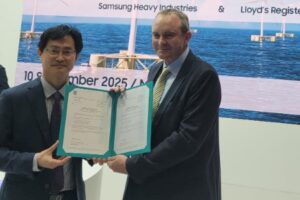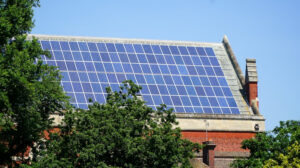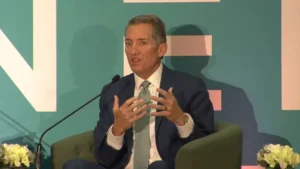Review of 2023 | The key developments and trends in the global hydrogen sector (Part 2: Usage)

The first part of this feature — covering key developments and trends in the production of clean hydrogen — was published yesterday and can be accessed here.
As governments around the world refined their hydrogen strategies in 2023, they paid more attention to the usage of clean H2, and largely concluded that it should be reserved for sectors where electrification is either not possible or may be difficult to achieve at scale.
The approach now being taken towards hydrogen usage in most countries — except Japan and South Korea (see panel below) — was perhaps best summed up by Irish climate minister Eamon Ryan in the country’s national hydrogen strategy document.
“We must not become distracted by the possibility to deploying hydrogen technologies where direct electrification would deliver a better outcome,” he wrote.
“If it is not efficient, if it is not the best use… then we will not be doing it.”
In practice, this has meant a reduction in support for the use of hydrogen in cars and to heat homes.
Article continues below the advert
So while there are still bullish advocates for using H2 in cars and boilers — mainly companies with vested interests and trade bodies with such members — few Western governments now believe these will ever be more than niche solutions, and are less willing than ever to spend taxpayers’ money on those areas.
Instead, they are largely backing the use of clean hydrogen (or its derivatives) to replace existing uses of highly polluting grey H2 (made from unabated fossil gas), such as the production of fertilisers and chemicals, and in oil refining, while also pushing for its use in decarbonising steel and long-distance transport — mainly trucks, ships and planes.
Notably, the EU’s latest Renewable Energy Directive, which became law in late October, includes mandates to ensure that those sectors use increasing amounts of green hydrogen (or its derivatives).
The directive, known as RED III, includes a requirement for industries such as ammonia and chemicals production, oil refining and steel to get at least 42% of their hydrogen from renewable sources by 2030, rising to 60% by 2035.
It also requires 1% of all transport fuel to be so-called Renewable Fuel of Non-Biological Origin (RFNBO) — the EU’s term for green hydrogen and its derivatives, such as ammonia or methanol — by 2030.
There were also three other EU directives signed off this year that will have significant implications for the usage of green hydrogen.
The Alternative Fuels Infrastructure Regulation (AFIR), which became EU law in September, requires the 27 member states to ensure that publicly accessible H2 filling stations — capable of serving both heavy-duty and light vehicles — are set up in every “urban node” and every 200km along the core routes of the planned Trans-European Transport Network (TEN-T) by 2030.
The TEN-T core network links “urban nodes” — an EU term for 424 major cities in the bloc with ports, airports and rail terminals — across Europe.
Another directive, FuelEU, which also became law at the same time, requires all ships operating in EU waters with a gross tonnage above 5,000 tonnes to cut greenhouse gas (GHG) emissions by 2% from the start of 2025. This will rise to 6% from 2030, 14.5% from 2035, 31% from 2040, 62% from 2045, and finally 80% from 2050.
Vessels will be able to double-count their emissions savings when using RFNBOs, up to the end of 2033, in order to encourage their use.
In addition, a separate directive signed off by member states in October, known as ReFuelEU Aviation, stipulates that 1.2% of all aviation fuel used by planes leaving EU airports in 2030 must be made from synthetic kerosene — which is produced by combining green hydrogen with captured CO2 in the Fischer-Tropsch process — rising to 2% from 2032 to 2034, and to 35% in 2050.
These four EU directives, combined, create a ready market for green hydrogen and its derivatives in Europe — and leave little room for blue H2 (made with fossil gas and carbon capture and storage).
Cars and trucks
The outlook for hydrogen cars plummeted in 2023, but the prospects for hydrogen-powered trucks have never looked better.
Drivers of fuel-cell cars were punished this year in the key markets of California, the only US state with publicly accessible H2 fuel pumps, and South Korea, the world’s largest hydrogen car market.
In California, the largest H2 fuel retailer in the US, True Zero, which operates 37 of the 53 hydrogen filling stations in the state, hiked the price of H2 at all its pumps to $36/kg, up from just $13.14 in April 2021. Rival suppliers also raised their prices to similar levels.
According to Hydrogen Insight calculations, this meant that a Toyota Mirai had become almost 14 times more expensive to drive in the state than a comparable Tesla battery-electric car.
On top of this, almost half of the state’s hydrogen filling stations have been temporary closed since August, when the main H2 supplier in the region experienced a “major service disruption”.
And in September, California legislators reduced state funding for new hydrogen filling stations after being warned by state authorities that there was insufficient demand to warrant further investment.
A similar situation occurred this year in South Korea, where prices at filling stations were increased by a third in July — before a major supply problem put three quarters of the country’s hydrogen refuelling stations out of action.
Worldwide sales of fuel-cell vehicles (FCVs) have been falling in 2023, with a 38% year-on-year drop in South Korea reported in July. And while the country is still officially targeting 270,000 hydrogen cars on its streets by 2030, alongside 30,000 buses and trucks — it has cut subsidies for H2-powered cars, and few believe the goal is realistic.
As Nam-hoon Kang, chairman of the Korea Automobile Mobility Industry Association, told Hydrogen Insight in September: “The first problem is that fuel cell cars are competing with better electric vehicles. Electric vehicles are getting better, more efficient, economically. So most of the buyers of eco-friendly cars preferred the electric vehicle rather than the fuel cell cars.
“Secondly, they are very inconvenient to use because electric vehicle charging stations are more [abundant] than the fuel cell charging [filling] stations.”
And even Hiroki Nakajima, the chief technology officer of Toyota — which has been pushing its Mirai FCV since 2014 — admitted in October that the model has not been a success and that commercial trucks offer the best bet for future H2 road transport.
But perhaps the worst hydrogen car market was Denmark, where drivers have been unable to refuel since September after the country’s only commercial operator of hydrogen filling stations, Everfuel, closed them all down, citing a lack of profitability.
“The first-generation car fuelling stations are unprofitable and have reached technical end-of-life and will be discontinued,” the Danish company stated in its second-quarter results, pointing the finger to the EU’s AFIR, which requires filling stations to be capable of serving heavy-duty trucks.
Copenhagen-based taxi operator Drivr was immediately left with 100 stranded Toyota Mirai vehicles that it could not fuel.
On a brighter note, vehicle manufacturers have also thrown more weight behind hydrogen powertrains this year, announcing new models and longer ranges.
Truck companies Daimler in Germany and start-up Hybot in China, as well as bus manufacturers Irizar and Temsa, this year all unveiled vehicles that are capable of running more than 1,000km before needing to refuel, giving them a distinct advantage over battery-electric options for long-distance journeys.
By way of comparison, the much-hyped Tesla Semi battery-electric truck only has a range of 500 miles (805km).
However, despite the hundreds of hydrogen filling stations due to open in Europe in the coming years under the AFIR directive, the longer ranges of heavy-duty hydrogen vehicles and faster refuelling times, some critics say that their higher running costs and the continuing improvement of battery technology will soon whittle away any temporary advantage FCVs trucks might have today.
Hydrogen proponents counter that it will be almost impossible to fast-charge multiple battery trucks at the same location due to the sheer amount of renewable electricity that will be required.
Bus and rail
It has also not been a great year for proponents of hydrogen buses and trains.
Multiple transport operators across Europe and the US have reported technical and fuel-supply problems with their H2 buses and trains, or have come to the conclusion that it would be cheaper and easier to use battery electric options in the future.
For example, the German state-owned public transport company responsible for introducing the world’s first hydrogen-only railway line in 2022 stated in August that it would opt for an all-electric future because it has realised that battery models “are cheaper to operate”.
Similarly, the French city that pioneered articulated hydrogen buses in 2019 said that because of four years of frequent breakdowns and a near-doubling of H2 fuel bills, the city would opt for battery electric buses in future.
Indeed, Swiss trainmaker Stadler, which builds both electric and hydrogen-powered models, said in August that battery models usually emerge victorious in technology-neutral tenders put out by German railway operators looking for low-carbon trains — and are suitable on almost every railway line.
Other problems, a senior Stadler executive explained, are that maintenance on H2 trains is more complex than on battery trains, and that their fuel cells need replacing within three years, on average.
A German passenger group also slammed hydrogen trains as “a waste of taxpayer’s money” suitable for little more than “expensive photo ops”.
In Canada, a C$3m ($2.3m) three-month trial of a hydrogen train took place in Quebec from June to September, which was deemed a success by manufacturer Alstom, but the provincial government behind the pilot has not publicly made any comments on the trial since it was launched.
However, some local authorities have increased their hydrogen bus fleets this year with major new orders, such as the city of Cologne in Germany and the Italian cities of Venice, Bologna and Ferrara (with the latter three explicitly drawing on post-Covid recovery funds to cover their investments).
And after trialling a top-of-the-range electric bus, the California city of Santa Cruz opted to buy 57 hydrogen-powered buses, saying that the fully electric model struggled to get over the hills around the city and did not have enough charge to complete its route and return to base for recharging.
Shipping
Despite ammonia often being labelled as the shipping fuel of the future — particularly by project developers seeking to export vast quantities of the hydrogen derivative — the maritime sector has this year been far more interested in switching to methanol.
Burning methanol in ship engines will produce carbon dioxide, but green methanol is derived from green hydrogen and captured CO2, and is therefore, theoretically, a net-zero-emission fuel.
Maersk’s first dual-fuel ship capable of running on methanol, the Laura Maersk, made its maiden voyage this year, and the firm has 25 more of these vessels currently on order for delivery next year.
While its methanol supplier, OCI, has confirmed to Hydrogen Insight that the first volumes have come from biogenic feedstock rather than green hydrogen and captured CO2, this could change as more green methanol plants — such as those being developed by Maersk subsidiary C2X in Egypt and Spain, or Orsted in Sweden — come online.
The International Maritime Organization, the UN agency that regulates the global shipping industry, has also got more serious about decarbonisation this year, agreeing an “enhanced common ambition to reach net-zero GHG emissions from international shipping by or around, ie, close to, 2050”.
But the IMO’s regulations on the use of ammonia — a highly toxic chemical — as a fuel are not set to be approved until the end of 2024.
Nevertheless, Australian iron-ore billionaire Andrew Forrest’s Fortescue has already launched the first ship capable of running on ammonia, the Green Pioneer, although it is still burning diesel because the IMO has not yet approved NH3 as a shipping fuel.
And, of course, the aforementioned FuelEU directive will also drive the uptake of green ammonia or methanol as a shipping fuel — just as ReFuelEU Aviation will for aircraft.
Aviation
Hydrogen-powered planes have taken to the air for the first time this year, with multiple developers conducting test flights and manufacturers competing to be the first to offer commercial H2 flights.
The UK’s ZeroAvia and US-based Universal Hydrogen successfully tested passenger planes retrofitted with one fuel-cell engine running on gaseous H2 (and one conventional engine running on jet fuel), while Germany’s H2Fly took the world’s first 100% hydrogen-powered flight in September, after building its own HY4 demonstrator aircraft equipped with cryogenic liquid hydrogen storage tanks.
In July, Dale Vince, the founder of UK’s first renewable energy-only supplier, Ecotricity, announced plans to launch the world’s first hydrogen-powered airline in early 2024 — but will operate on kerosene for the first year while its chosen H2 engines go through regulatory checks.
The new “Ecojet” airline will operate 19-seater flights between Edinburgh and Southampton, said Vince, eventually using H2-powered fuel cell engines supplied by ZeroAvia.
And in November, France’s Airbus took to the skies in a glider equipped with a 100% hydrogen combustion engine — purportedly to study the contrails from the aircraft — as the company aims to get H2-powered passenger planes into the air by 2035.
While Airbus’ glider was unable to take off under its own power, Rolls-Royce and Easyjet demonstrated in September that 100% H2 can be combusted in a large aircraft engine at maximum thrust.
However, in November, the CEO of Rolls-Royce also stated that planes directly powered by hydrogen may not happen for another 15-20 years — instead anticipating that biomass-derived sustainable aviation fuel (SAF) will be used during this period, in addition to synthetic kerosene made from green hydrogen.
Heating
Meanwhile, the use of hydrogen to heat homes — long derided by analysts as dead in the water due to the massive efficiency losses compared to electric heat pumps — has massively lost political support in the UK.
While Westminster had originally planned a 2,000-home trial of hydrogen heating, the only two proposed “village” trials — in Whitby and Redcar — were both cancelled at the last minute after fierce public opposition.
UK ministers also declared that hydrogen heating was unlikely to become mainstream, with then energy secretary Grant Shapps saying in June that it was “unlikely to be the way forward” for the UK, and junior minister Lord Callanan admitting in November that there was “no way” large-scale hydrogen in heating could be practically achieved.
In Germany, the two main parties in the ruling government — the Social Democrats and the Greens — sought to rule out hydrogen as an option in its new controversial clean heating bill, but the move was vetoed by the minor party in the traffic-light coalition, the Free Democrats.
A compromise position — for gas networks to be switched to run on pure hydrogen by 2035 — was subsequently agreed, but a national association for gas network operators said it would be impossible for gas distributors to meet that target, so companies would therefore stop all work on H2 heating.
A junior climate minister later admitted that hydrogen “will probably be the most expensive route for clean heating”, and committees in the upper house of the German parliament, the Bundesrat, sought to amend the bill to ban the use of hydrogen to heat buildings — although this move did not prove to be successful.
On top of all this, the number of independent studies concluding that there will be no significant role for hydrogen in heating has now risen to 54 — with none saying the opposite.
However, there was some good news for hydrogen heating proponents this year.
In January, South Korea unveiled plans to create six “hydrogen cities” that would use H2 to heat buildings, and in July, the small Dutch city of Stad aan ’t Haringvliet voted in favour of switching its gas-based heating systems to green hydrogen produced from excess wind and solar, with subsidies covering the cost difference.
Green steel
Steel has emerged this year as a key H2 offtaker, as green hydrogen is required to decarbonise an important part of the steelmaking process — the extraction of iron from its ore.
Steel currently relies on coking coal to simultaneously provide high temperature heat and a means of chemically removing oxygen from the iron oxide ore (the oxygen reacts with carbon in the coke to form CO2). But green hydrogen can also carry out the same process, with the oxygen reacting with H2 to form water vapour (steam), rather than CO2.
While the steel industry produces 7-11% of the world’s CO2 emissions, it is also a vital material for the energy transition, with wind turbines, electricity pylons and even electrolysers all made primarily from the alloy. And as it is a massive industry in many countries, politicians have been keen to support their steel industries, while simultaneously wanting to decarbonise them.
As the conversion of grey steel plants to green ones will require the replacement of existing equipment — ie, hydrogen-based direct iron reduction facilities and electric arc furnaces — producing green steel will require massive upfront investment, as well as higher ongoing costs.
This has all led governments to offer companies billions of dollars of subsidies to make the switch.
Just last week, the EU approved a €2.6bn grant from the German government to “partially decarbonise” an existing steel plant belonging to Stahl-Holding-Saar (SHS) — a move that came five months after it signed off on €2bn of state aid from the German government to steelmaker Thyssenkrupp for a new “hydrogen-capable” plant at its massive complex in Duisburg.
Earlier this month, the EU granted €700m of funding from its Innovation Fund to H2 Green Steel in northern Sweden.
And in the summer, the EU approved €280m and €850m of state aid from the French and Belgian governments, respectively, to Luxembourg-headquartered steel giant ArcelorMittal.
In April, German steelmaker Salzgitter said it would start converting all its production facilities to run on green hydrogen and electric arc furnaces by the end of 2025, after receiving almost €1bn of subsidies (€700m from the German government and €300m from the regional government of Lower Saxony).
Elsewhere, construction began on the first green ironworks in Africa (Namibia), the United Arab Emirates and Oman this year.
One of the reasons that developers, politicians and investors are so interested in green steel is because its added costs can more easily be absorbed in products.
For instance, replacing grey steel with green in a car would only add about €300 to the model’s purchase price — a drop in the ocean for a product costing tens of thousands of euros.
H2 Green Steel has already inked multiple binding supply contracts with automotive companies, including Porsche, and Swedish steel firm SSAB will be supplying green steel to truck maker Scania from 2026.
And the idea of producing green iron in parts of the world with cheap green hydrogen, and then exporting the iron (rather than the H2) is increasingly growing in traction.
The Oshivela green ironworks in Namibia is planning to do just that; the prospect of exporting direct-reduced iron (DRI) is included in Uruguay’s new national hydrogen strategy; Australia’s Liberty Steel is planning to export DRI; and US electrolyser maker Plug Power has proposed a 1GW green hydrogen project in Finland that would export DRI, rather than H2 or ammonia.
Fertilisers and chemicals
Fertiliser and chemical companies that use grey hydrogen as the building block for their products are an obvious starting point for the use of green H2, as they have no other possible route to decarbonisation.
And as we need fertilisers to produce food, this sector should arguably be the most important end use for renewable H2, in the short term at least.
But fertiliser and chemical companies have largely been reluctant to make the switch.
This is partly because green hydrogen is the more expensive option, which would drive up the cost of their products — possibly increasing food prices beyond what customers are willing to pay — and partly due to the fear of being locked into long-term contracts.
Any green-hydrogen supply deals signed today would probably have higher prices than those inked in the coming years, as the cost of producing renewable hydrogen is expected to fall.
However, fertiliser makers Fertiberia, Yara and OCI were listed among the world’s top nine clean-hydrogen offtakers by Rystad Energy back in January.
Oil refining
Oil refiners are becoming increasingly bullish about switching away from grey hydrogen — which is used to remove sulphur from crude oil and for hydrocracking (converting heavy gas oils into lighter molecules, such as diesel and jet fuel).
In September, French oil giant TotalEnergies launched a massive tender for 500,000 tonnes of green hydrogen a year to replace all the grey H2 it uses today at its European refineries. Such a volume would require about 5GW of electrolysers and 10GW of dedicated renewable energy, with investment of around €14bn.
A few days later, Portuguese oil & gas firm Galp took a final investment decision (FID) on a 100MW green hydrogen project at its refinery in Sines — which is Portugal’s largest consumer of grey H2 produced from fossil gas.
The two blue hydrogen projects at the Port of Rotterdam that have taken FID in recent months will both see their H2 used in oil refining.
Shell was also listed among the world’s top clean-hydrogen offtakers by Rystad in January.
Six of Shell’s hydrogen offtake deals will be used to replace grey H2 used in existing oil refineries, with the most noteworthy project being the oil giant’s own Holland 1 hydrogen plant in Rotterdam, which will produce green H2 from offshore wind. It took a final investment decision on the 200MW facility in July 2022, with plans for it to begin operations in 2025.
Japan and South Korea do not believe they can produce or import enough renewable electrons to meet their electricity needs and are therefore planning to import vast amounts of clean hydrogen or its derivatives to generate energy in power stations or for use as a fuel for transport and heating.
Both countries are densely populated, leaving little available land for large wind or solar farms, while geographically isolated, which would make it expensive and difficult to import clean electricity from elsewhere.
Both countries’ nearest neighbours are each other, North Korea, China and Russia — and the latter three are not considered friendly enough to be relied upon to supply the clean power required to run their power-hungry economies.
Offshore wind may be the best option for clean-power supply in both countries, but both countries have been slow on the uptake. And as senior SK Ecoplant executive Woojin Jang recently told Hydrogen Insight, it will take many years before a substantial amount of offshore wind can be built off South Korea, so large amounts of imported hydrogen would still be required.




